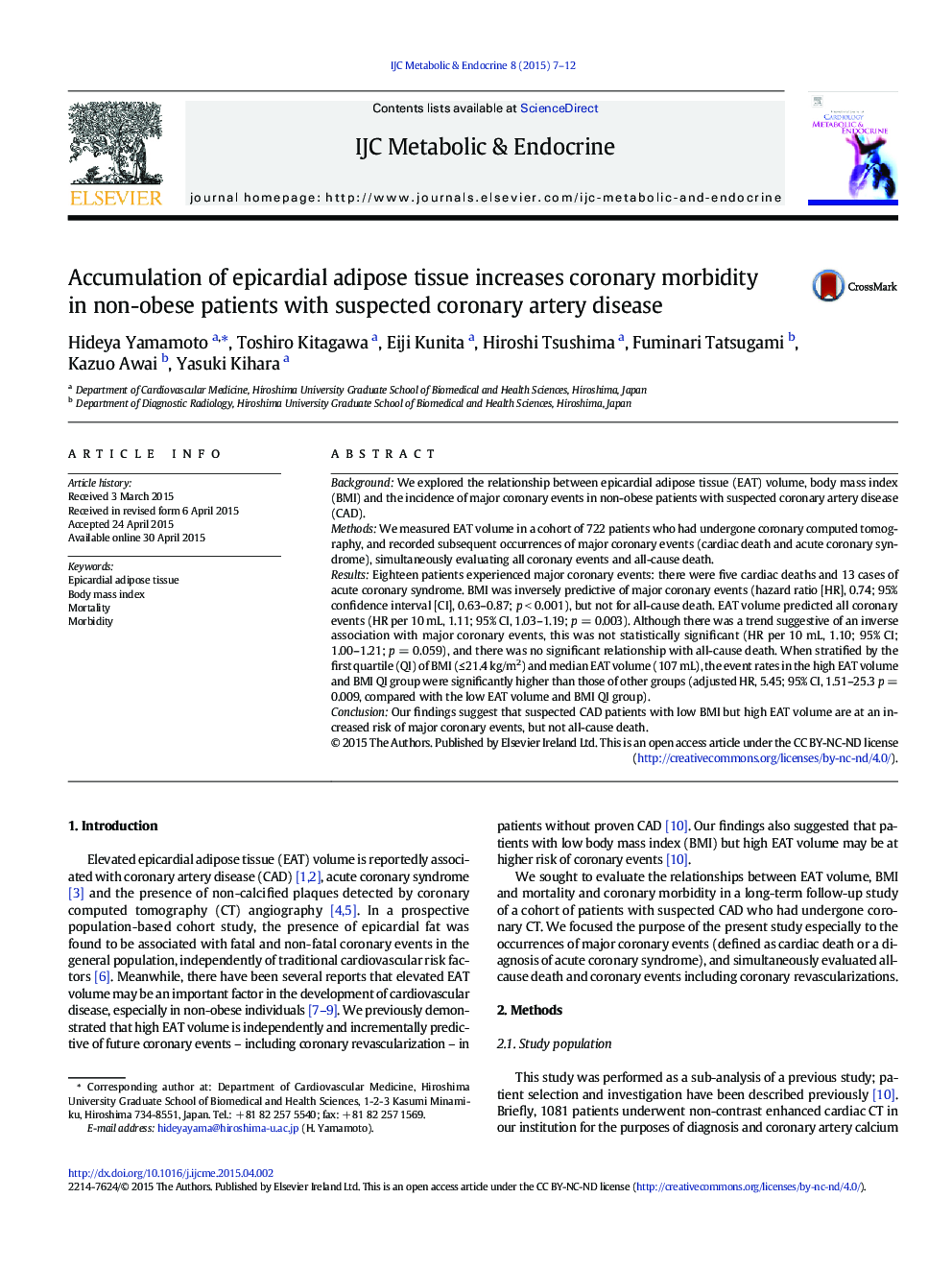| Article ID | Journal | Published Year | Pages | File Type |
|---|---|---|---|---|
| 2927224 | IJC Metabolic & Endocrine | 2015 | 6 Pages |
BackgroundWe explored the relationship between epicardial adipose tissue (EAT) volume, body mass index (BMI) and the incidence of major coronary events in non-obese patients with suspected coronary artery disease (CAD).MethodsWe measured EAT volume in a cohort of 722 patients who had undergone coronary computed tomography, and recorded subsequent occurrences of major coronary events (cardiac death and acute coronary syndrome), simultaneously evaluating all coronary events and all-cause death.ResultsEighteen patients experienced major coronary events: there were five cardiac deaths and 13 cases of acute coronary syndrome. BMI was inversely predictive of major coronary events (hazard ratio [HR], 0.74; 95% confidence interval [CI], 0.63–0.87; p < 0.001), but not for all-cause death. EAT volume predicted all coronary events (HR per 10 mL, 1.11; 95% CI, 1.03–1.19; p = 0.003). Although there was a trend suggestive of an inverse association with major coronary events, this was not statistically significant (HR per 10 mL, 1.10; 95% CI; 1.00–1.21; p = 0.059), and there was no significant relationship with all-cause death. When stratified by the first quartile (QI) of BMI (≤ 21.4 kg/m2) and median EAT volume (107 mL), the event rates in the high EAT volume and BMI QI group were significantly higher than those of other groups (adjusted HR, 5.45; 95% CI, 1.51–25.3 p = 0.009, compared with the low EAT volume and BMI QI group).ConclusionOur findings suggest that suspected CAD patients with low BMI but high EAT volume are at an increased risk of major coronary events, but not all-cause death.
